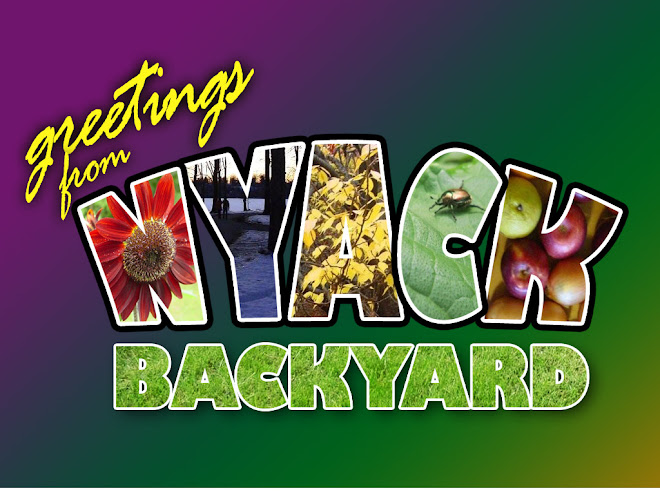 |
| photo by Dennis Fagen |
When Ladybird Johnson was a little girl, she used to comb the meadows and fields for the first bloom of the season and crown it “The Queen.” Many years later, as First Lady, she remembered how wildflowers and native plants had entertained and consoled her as a child, and made it her personal mission to ensure that future generations would appreciate them too. Along with our local heroine Helen Hayes, she founded the Ladybird Johnson Wildflower Center just outside of Austin, TX, and helped get laws passed to beautify US roadsides. The center is part of the University of Texas and is a research center and as well as a public garden. I was able to make a short visit there while I was visiting Austin last week.
 |
| Lupinus texensis |
I saw a huge variety of plants there, but decided to highlight only my very favorites, and a few that I saw most frequently while we were in Austin. Below is "Indian Blanket."
 |
| Gaillardia pulchella |
 |
| Ratibida columnifera |
 |
| Leucophyllum frutescens Similar hues were found on this captivating Pink Mimosa. |
Mimosa borealis
 |
| Salvia farinacea |
 |
| Datura wrightii (a.k.a. "Jimsonweed") Although the blooms are pink, this flower is known as "White Gaura" |
 |
| Guara lindhelmeri |
Red Yucca was in bloom all over Austin, often in large potted arrangements.
 |
| Hesperaloe parviflora |
An orange spider wasp enjoying some yarrow.
(From "Whats That Bug.com": This magnificent Spider Wasp is a Tarantula Hawk, a member of several genera that hunt Tarantulas to feed to their young. The female Tarantula locates a Tarantula and stings it which paralyzes the Tarantula, but does not kill it. The female Tarantula Hawk then buries the spider after laying an egg. The larva of the wasp then feeds on the living but paralyzed Tarantula which ensures the meat is fresh. The vital organs are eaten last. The sting of a Tarantula Hawk is reported to be quite painful. Only the female stings. These large distinctive wasps, generally with black bodies and red wings, are frequently seen taking nectar from flowers including milkweed. You can find more information about Tarantula Hawks on BugGuide.)
 |
| Achillea millefolium One of the highlights of the center is the theme gardens in this gorgeous courtyard. |
"Sotol" was the focal point of this succulent/cactus garden. Other themes included medicinal, woodland, and flowering plants.
Dasyilirion texanum
Totally charming little clematis near the front archways.
 |
| Clematis pitcheri |
One of the staff showed me how the bees get the nectar from the honeysuckle. They’re too fat to fit into the flower opening, so they bite through the base of the flower.
Inside the “Little House” there were activities for children, and a fascinating display of photos from Ladybird’s life.
 To learn more about Ladybird Johnson, find this beautifully illustrated book, Miss Ladybird's Wildflowers: How a First Lady Changed America by Kathi Appet, illustrated by Joy Fischer Hein.
To learn more about Ladybird Johnson, find this beautifully illustrated book, Miss Ladybird's Wildflowers: How a First Lady Changed America by Kathi Appet, illustrated by Joy Fischer Hein. What wildflowers are blooming near you right now?






8 comments:
We are seeing lots of balsamroot (Balsamorhiza deltoidea) and western serviceberry (Amelanchier alnifolia) along the roadsides. Our Mother's Day tradition is to go on a picnic so we will be looking for more next week. We've had a very wet and cool spring, so I think the flowers are a little behind the usual bloom times.
Not sure what Google is doing with my ID, but that was me (and I had to look up the botanical names...)
- Susan M.
You went to Austin? How very cool! The first Garden Blogger spring fling was held there and I've enjoyed hearing about the LBJ Center. Oh to see the bluebonnets all in bloom...
Oh I did not know that Gaillardia is also known as Indian blanket.
Those clever bees~Nothing will stop them on their way to tasty nectar and pollen. I fell in love with The LBJ Wildflower center while attending Spring Fling. It's a great place; so glad you shared it us. gail
Beautiful photos, JGH. Looks like it was a lovely trip. So far everything is behind schedule here because of the cold and late snow this year. Just yesterday the daffodils and tulips started really bursting out. And just today, forsythia has come into bloom though not as full as usual and weeks and weeks behind normal schedule. I haven't seen any wildflowers yet, but if the weather holds I'll be out and about this weekend and hope to spy some.
Beautiful photos - I'll have a pink mimosa please!
Until we got around to mowing,,,there were some pretty purple wildflowers (weeds?) - no idea what they were. My husband left a few token ones around a stump :)
What a wonderful post! If I ever get to Texas this place will surely be on my must-visit list. I am amazed by the bees' cleverness.
Post a Comment